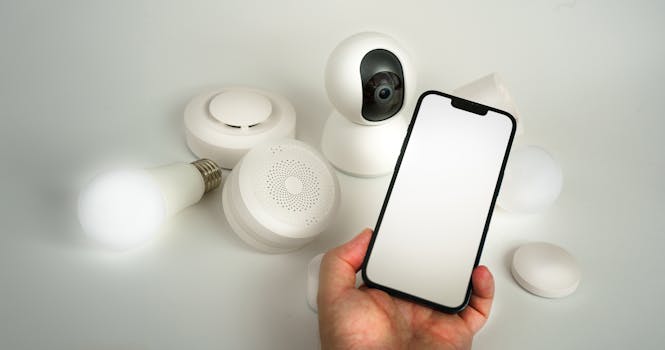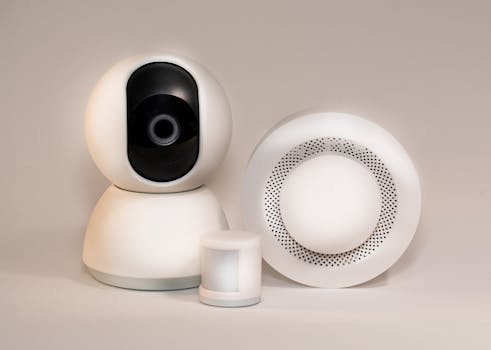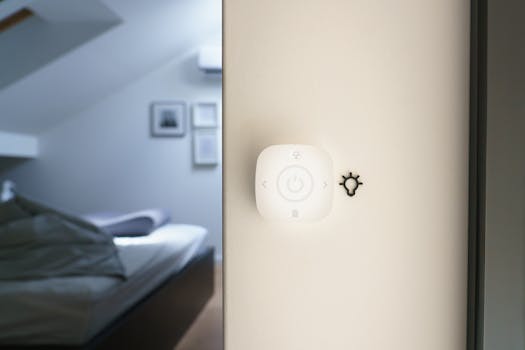
Home Automation in 2025: The Smart Home Ecosystem
Home Automation in 2025: The Smart Home Ecosystem is revolutionizing the way we live and interact with our homes. With the rapid advancement of technology, smart devices, and the Internet of Things (IoT), the concept of home automation has become a reality. In this article, we will explore the latest trends and developments in home automation and how they are transforming the way we live, work, and play.
The Evolution of Home Automation

Home automation has come a long way since its inception. From simple thermostats and lighting systems to complex smart home ecosystems, the technology has evolved significantly over the years. The introduction of IoT devices, voice assistants, and artificial intelligence (AI) has enabled seamless communication between devices, making it possible to control and monitor various aspects of our homes remotely.
Key Components of a Smart Home Ecosystem
A smart home ecosystem typically consists of several key components, including:
- Sensors and Devices: These include temperature sensors, motion detectors, door and window sensors, and security cameras that provide real-time data and feedback.
- Hub or Gateway: This is the central unit that connects and controls all the devices in the smart home ecosystem, enabling communication and data exchange between devices.
- Voice Assistants and AI: Voice assistants like Alexa, Google Assistant, and Apple Siri use AI to learn and adapt to our behavior, making it possible to control devices with simple voice commands.
- Mobile Apps: Mobile apps provide a user-friendly interface to control and monitor smart devices, receive notifications, and access data analytics.
Benefits of Home Automation

The benefits of home automation are numerous, including:
- Energy Efficiency: Smart devices can optimize energy consumption, reduce waste, and lower utility bills.
- Convenience and Comfort: Home automation enables us to control lighting, temperature, and entertainment systems with ease, creating a comfortable and convenient living environment.
- Security and Safety: Smart security systems can detect intruders, alert authorities, and provide real-time video footage, ensuring our safety and security.
- Increased Property Value: A smart home ecosystem can increase property value, making it more attractive to potential buyers and renters.
Challenges and Limitations

While home automation offers numerous benefits, there are also challenges and limitations to consider, including:
- Interoperability Issues: Different devices and systems may not be compatible, making it difficult to integrate them seamlessly.
- Cybersecurity Risks: Connected devices can be vulnerable to hacking and cyber threats, compromising our personal data and security.
- High Upfront Costs: Investing in a smart home ecosystem can be expensive, making it inaccessible to many homeowners.
- Complexity and Maintenance: Smart devices and systems require regular maintenance and updates, which can be time-consuming and frustrating.
Future of Home Automation

The future of home automation looks promising, with advancements in AI, IoT, and 5G technology. We can expect to see more integrated and seamless smart home ecosystems, with increased focus on energy efficiency, security, and convenience.
Emerging Trends and Technologies
Some emerging trends and technologies to watch out for include:
- Artificial Intelligence and Machine Learning: AI and ML will play a crucial role in making smart homes more intuitive and adaptive to our needs.
- 5G and Edge Computing: 5G networks and edge computing will enable faster data transfer, lower latency, and more efficient processing of smart home data.
- Biometric Authentication and Voice Recognition: Biometric authentication and voice recognition will provide more secure and convenient ways to control smart devices.
Conclusion

In conclusion, home automation in 2025 is a rapidly evolving field, with significant advancements in technology and innovation. While there are challenges and limitations to consider, the benefits of a smart home ecosystem far outweigh the drawbacks. As we move forward, we can expect to see more integrated, secure, and efficient smart home systems that transform the way we live, work, and play.


